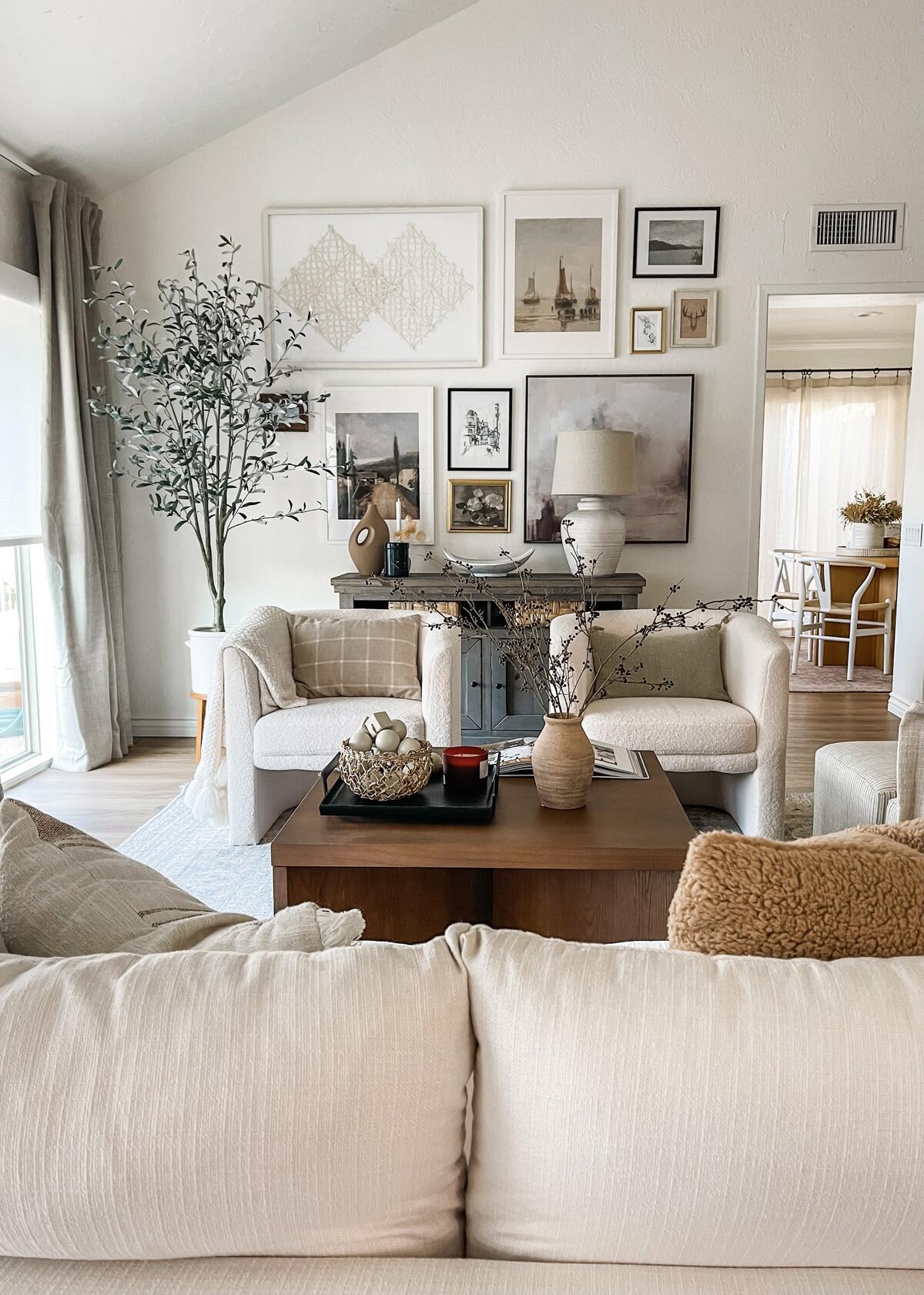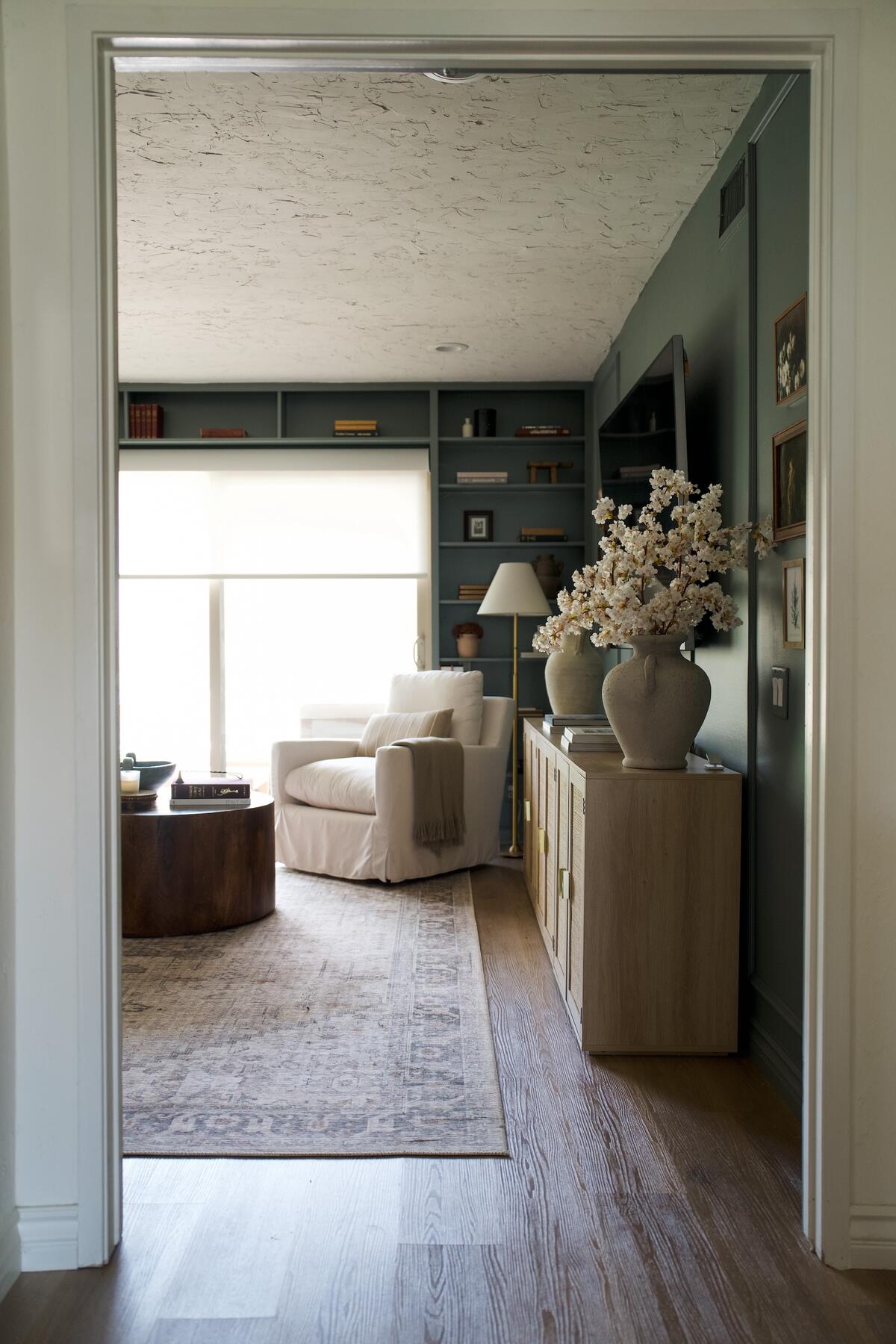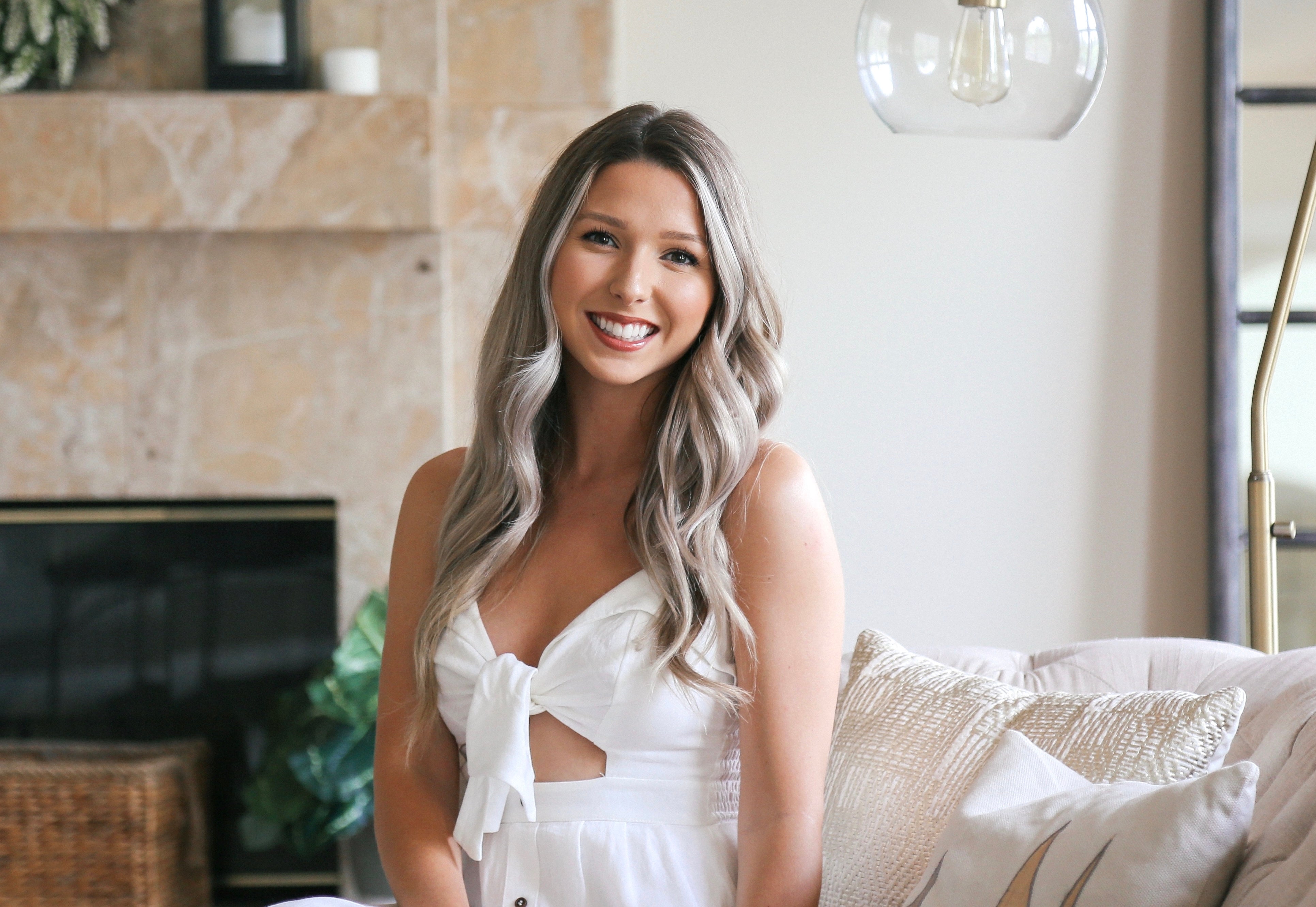In Ask an Influencer, Business of Home explores the creator economy. This week, we spoke with designer @kristenmcgowan.
While other kids were watching the Disney Channel, Kristen McGowan was glued to HGTV. “I [would be] watching Trading Spaces and all of these room-makeover shows, not really realizing it was someone’s job to be an interior designer,” she says. “But then I would take all of that and go upstairs and redesign my room.”
It’s no surprise that she went on to earn her bachelor’s in interior design and land a job with a high-end residential designer. At the time, a traditional path in the industry seemed pretty likely—until her then-boyfriend started posting on a short-form video platform called Vine. As his following grew, so did viewers’ interest in McGowan: Questions flooded in about her style, her hair, her outfits. Before long, she had amassed her own following; by 2016, she launched a YouTube channel of lifestyle content, which eventually came to center on interior design and home decor.

It wasn’t until 2019 that she discovered her sweet spot: home makeovers. After documenting redesign projects at her parents’ house—starting with her formerly hot-pink childhood bedroom—she saw her following tick sharply upward, a trend that only accelerated throughout the pandemic. “Because I grew up watching those TV programs, knowing their formats, I could subconsciously mimic that and follow the same kind of idea, from concept to surprise reveal,” she says. “You could see the whole thing come together—and that really worked.”
As McGowan continued to follow her new strategy, her following grew faster than ever—she now has 1.77 million subscribers on YouTube and 227,000 on Instagram. Here, the designer shares the attainable tech tools that allow her to balance design with content creation, how she generates income even when the brand partnership pipeline is slow, and her best strategies for translating a home’s atmosphere to social media.
Tech Tricks for a One-Woman Show
McGowan adheres to a strict content schedule of one YouTube video per week, along with corresponding posts on Instagram. Even with a high-volume schedule, creative control is a top priority, so she handles the entire editing and production process herself.
As a result, the designer developed a streamlined system for producing and editing content, aided by the best tech for the job. She often shoots project footage for her longer-form videos with the Canon PowerShot G7 X Mark II, a standard vlogging camera. “It has its own built-in mic, and it’s small, so I can take it anywhere,” she says. “It’s [also] lightweight. When you’re trying to get all these still shots and you’re holding a heavy camera, it’s really hard to make it smooth if you don’t have a gimbal and all the fancy equipment, so I worked on that for years.”
For on-the-go content—shopping videos or off-the-cuff shots outside the home—she opts for her iPhone (on 4K mode). “[That way], I’m not being awkward or weird in public with a camera. I try to keep it super casual—very, ‘Oh, I’m just showing this thing to my mom,’” she says. For sit-down videos, she recommends a standard Sony camera.
McGowan edits all content on Adobe Premiere Pro—the best software, she says, for beginners who are opting for speed and ease above high-tech prowess (although watching a few editing tutorials here and there can help up your game). “I’m learning as I’m going, and trying to get better, but I need to be fast with the editing process. I can’t spend all week trying to learn new skills—I need to just get it done,” she explains.
Generating Income Outside of Brand Partnerships
While brand partnerships make up the bulk of McGowan’s income, another large chunk comes from passive revenue sources connected to her content, including AdSense for YouTube. “Because that is my main focus, and I’ve grown over 400 videos on my channel that have done really well over time, that’s just residual income every month—and the more videos you have on your channel, the larger the income you’ll receive,” she says.
The platform’s payment structure is a good reminder to remain consistent with posting content, McGowan adds—plus, it’s protected from the fluctuating nature of brand partnerships, with budgets and opportunities that ebb and flow over time. “Some months are very busy with brand campaigns, and some are slower, so I try to maintain my YouTube AdSense as my salary,” she says.
Since much of her content is product-focused, working with affiliate platforms has also provided McGowan with a steady stream of passive income. She’s currently part of four (Amazon Associates, YouTube Shopping, MagicLinks and LTK), each of which allows her to make a commission if customers are directed to buy a project from her page. “That can really be as large or small of an income as you want, because it takes effort to be part of all the platforms that can bring you affiliate commissions,” she says. “But if you put time into linking and sourcing products and giving people ideas, you can grow your affiliate commissions to be quite high.”

Fine-Tuning Social Media Photography
It’s a familiar situation for designers: Through the lens of your camera, sometimes the space you gave a painstaking amount of time and attention to just doesn’t look right. “When you’re designing a space, you’re thinking, ‘This is going to look great on camera.’ Then when you take a picture of it, not everything’s in frame—you’re not really getting the whole experience,” says McGowan. “You almost have to break apart your room that you just finished and restyle it for a photo.”
She suggests honing in on vignettes, which might involve temporarily adjusting the proportions of a space (a side table’s proximity to a sofa, for example) in order to give your audience a better sense of how the design is created. “Maybe it’s moving things closer together, or turning off the lights so you’re not getting a weird glare or a yellow tone,” says the designer. “Even placing lifestyle products in your space and rustling a blanket so it looks more realistic and has some movement to it, so that everything doesn’t look as staged, and you’re bringing some life into it. That really brings some realism to photography.”
McGowan says that designers often miss an opportunity for engagement on social media when they assume that a space can speak for itself. “You really have to step back and make it way more relatable and break things down in a very simple form to grow a following,” she explains. “You can showcase the incredible project that you’ve completed, but I don’t know if you’d get the same kind of viewership and appreciation as if you broke it up into: ‘This is exactly how I hung these curtains,’ and ‘This is exactly what I used,’ and ‘This is how you can do it.’ Bringing more relatability to design will grow an audience and a following to your company so much more.”





























